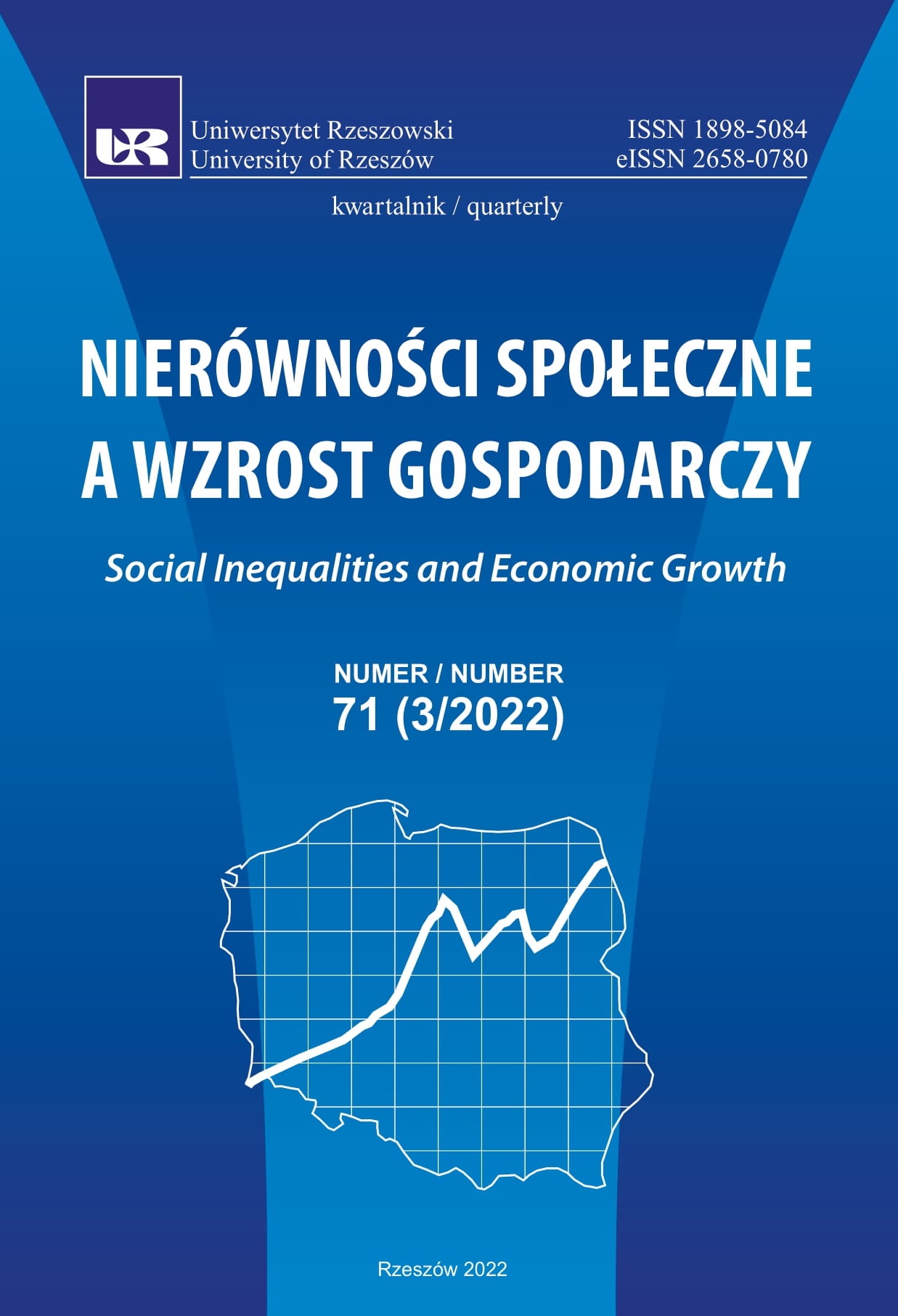Impact of the COVID-19 pandemic on the financial situation of enterprises from the construction sector in Poland
DOI:
https://doi.org/10.15584/nsawg.2022.3.8Keywords:
COVID-19 pandemic, discrimination analysis, financial conditionAbstract
The COVID-19 pandemic has left its mark on the global economy. The issues raised in the study present the impact of the pandemic on the construction sector in Poland. The verification of the financial condition of enterprises was carried out with the use of three of R. Jagiełło’s discriminatory models– construction sector, T. Maślanka’s model 4 and B. Prusak’s model 1. 22 enterprises; 18 limited liability companies and 4 stock-offering companies were included in the research sample, and the research period was 2018–2020. The conducted analysis made it possible to assess the financial condition of the surveyed companies, including the identification of entities at risk of bankruptcy. T. Maślanka’s model showed a deterioration of the financial condition in the first year of the pandemic (2020) compared to the previous year (2019) in 13 companies, which is 59% of the sample, but only one company reached a value that put it at risk of bankruptcy. B. Prusak’s model shows the decline in the function value of 10 companies (45% of the surveyed units) while R. Jagiełło’s model showed a worse financial condition in 8 enterprises (36% of the total research sample).
Downloads
References
Jagiełło, R. (2013). Analiza dyskryminacyjna i regresja logistyczna w procesie oceny zdolności kredytowej przedsiębiorstw. Materiały i Studia, 286. Warszawa: NBP.
Korol, T., Prusak, B. (2022). Upadłość przedsiębiorstw a wykorzystanie sztucznej inteligencji, wydanie IV zmienione. Warszawa: Wydawnictwo CeDeWu.
Lichota, W., Rabiej, E., Pitera, R. (2021). Analiza finansowa przedsiębiorstw wybranych sektorów ze szczególnym uwzględnieniem zagrożenia upadłością. Warszawa: Wydawnictwo CeDeWu.
Maślanka, T. (2008). Przepływy pieniężne w zarządzaniu finansami przedsiębiorstw. Warszawa: Wydawnictwo C.H. Beck.
Mieszkania, których budowę rozpoczęto – dane miesięczne narastające. Pobrano z: http://swaid.stat.gov.pl/Budownictwo_dashboards/Raporty_predefiniowane/RAP_DBD_BUD_7.aspx (2022.07.18).
Pawłowski, M. (2018). Modele dyskryminacyjne w ocenie ryzyka upadłości emitenta obligacji korporacyjnych. Polityki Europejskie, Finanse i Marketing, 19(68), 211–222. DOI: 10.22630/PEFIM.2018.19.68.18.
Pusak, B. (2004). Ocena zagrożenia upadłością produkcyjnych spółek kapitałowych w Polsce w latach 1998–2002. W: D. Appenzeller (red.), Upadłość przedsiębiorstw w Polsce w latach 1990–2003: Teoria i praktyka (s. 165–179). Poznań: Wydawnictwo Akademii Ekonomicznej.
Wardzińska, K. (2012). Przykłady zastosowania analizy dyskryminacyjnej do oceny sytuacji finansowej przedsiębiorstw. Economy and Management, 3, 197–208.
Zielińska-Chmielewska, (2015). Zastosowanie analizy dyskryminacyjnej do oceny zagrożenia upadłością polskich przedsiębiorstw przetwórstwa mięsnego. Studia Oeconomica Posnaniensia, 3(4), 139–152.
Downloads
Published
How to Cite
Issue
Section
License
Copyright (c) 2022 University of Rzeszow

This work is licensed under a Creative Commons Attribution-ShareAlike 4.0 International License.


